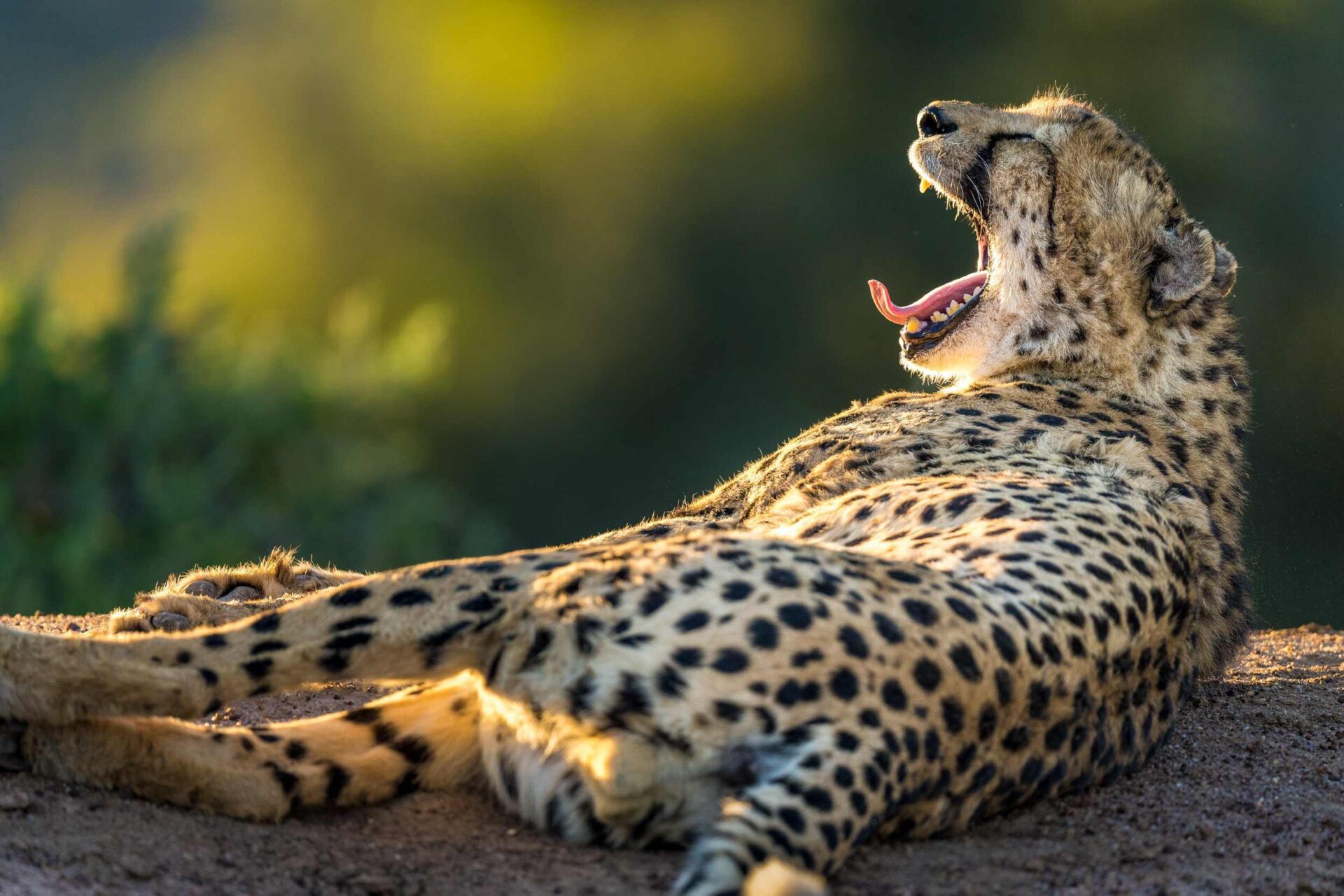Safari in every season
Tswalu offers a private wilderness experience that is consistently rewarding throughout the year. Stretching for 1200 square kilometres across the southern Kalahari, this vast reserve offers something increasingly rare in our crowded world – space to breathe and time to absorb the subtleties of each season, regardless of when you choose to visit. Nature’s unique rhythms lend beauty, depth, and variety to every safari in this privately protected wild place.
Characteristic seasonal changes are profoundly influenced by the presence or absence of water. Being in the southern Kalahari, Tswalu receives more rain than the rest of the region (on average, 300 millimetres per year), which is why it’s described as semi-arid rather than arid. To witness the landscape’s radical response to rain after a dry spell is to feel a visceral connection to nature and marvel at its tenacity and regenerative potential.
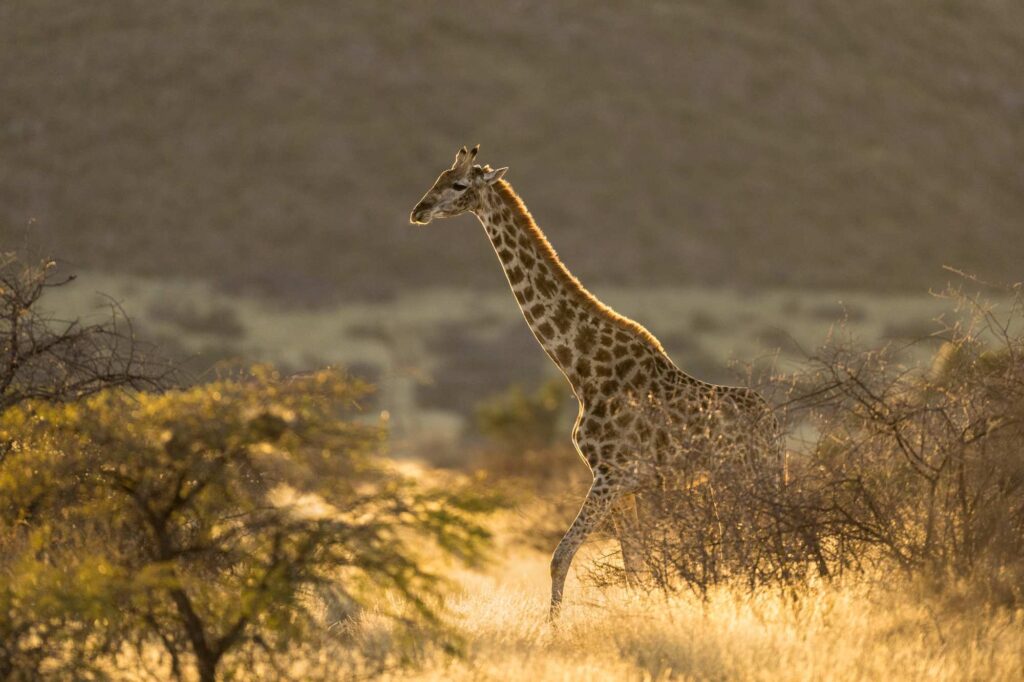
Deirdre Opie, very familiar with Tswalu after six years of guiding, is attuned to the impact of seasonal rain on the fragile yet resilient Kalahari ecosystem. “During the dry season, which is typically our winter, the red Kalahari sand and the dune crests are very prominent. As soon as we’ve had some rain, it starts greening up, and insect life increases,” explains Deirdre. “Certain flowering plants may have a boom year, depending on the period of rain and temperatures. Not all areas of Tswalu green up at the same time, creating diverse landscape experiences across the reserve.”
Spring (September – October)
The weather warms up with pleasant days and some cool evenings in September. Trees begin to flower, with blackthorn, camel thorns, and shepherd’s trees leading the way. Blossoming blackthorn and honeybush scent the evening air. Electric storms may form on the horizon, heralding the approach of summer rain. The distinctive calls of barking geckos fill the night as they search for mates while meerkat pups begin emerging from their dens in anticipation of abundant resources.
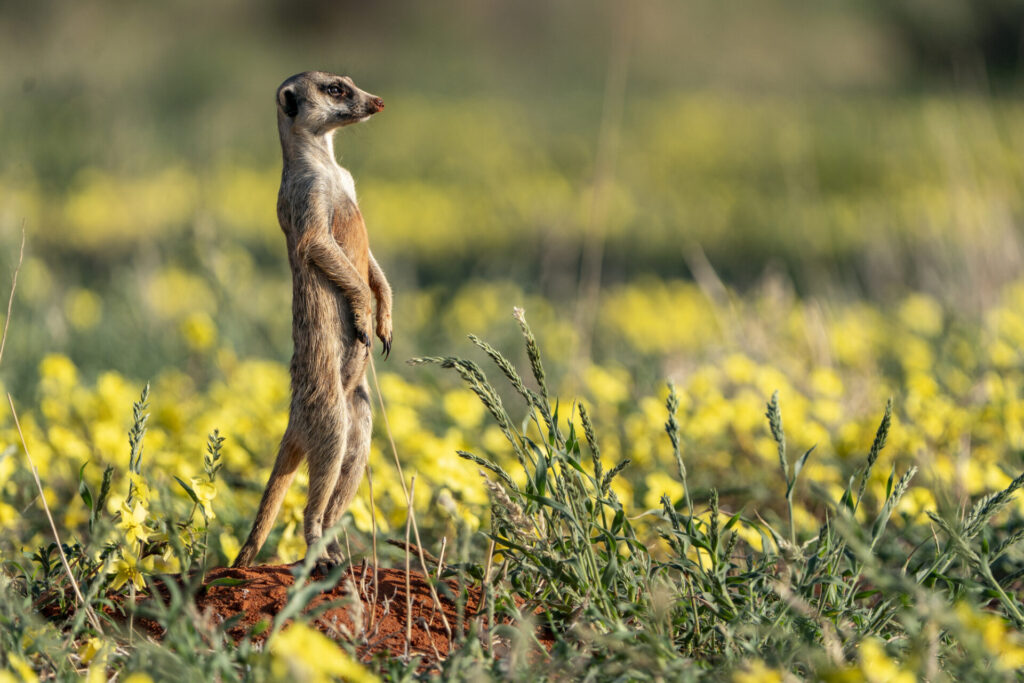
Summer (November – March)
Days are hot with mild evenings and spectacular thunderstorm cloud buildups. This is when the migrant birds arrive, making it an exciting time for birders. Many antelope species calve early in summer and signs of new life abound everywhere. Jackals and foxes bring their pups above ground after the first rains to feast on suddenly prolific insects. Rain transforms the semi-arid savannah into a lush green spectacle with carpets of golden-yellow flowers, including fields of devil’s thorn. Summer also brings butterfly migrations, notably the brown-veined white, creating another layer of natural wonder.
During these warmer months, your 4×4 safari vehicle will have a canvas roof for protection from the elements – mainly the sun. Guides typically recommend an early morning start, whether for a drive, walk, or horseback ride, followed by a late afternoon activity. Most guests choose to rise early to maximise wildlife viewing before the day heats up or opt for night drives after dinner when animals become active again.
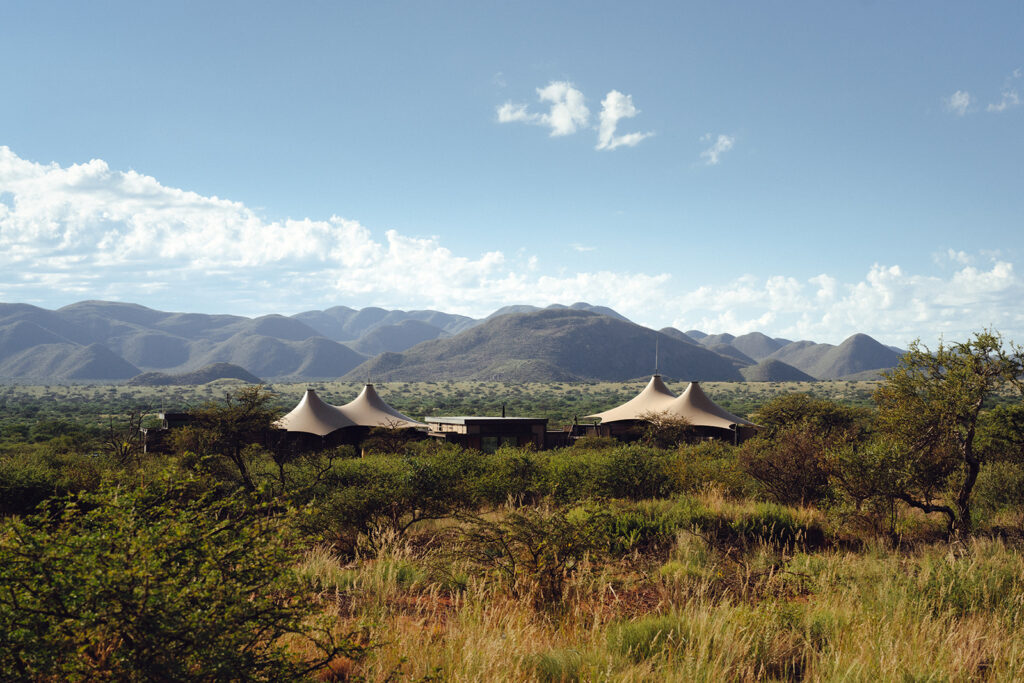
Autumn (April – May)
Days become progressively milder, while evenings cool down. Potential late-season rain keeps the landscape at its greenest. The savannah takes on a silky appearance as grasses produce seeds that dance on gentle breezes. This is the rutting season when antelope are in peak physical condition and compete for territories and mates. Animals preparing to hibernate through winter, such as leguaans and tortoises, become highly active, building up reserves. Many Kalahari plants produce fruits that provide essential nutrition for birds preparing for their long migrations northward.
Winter (June – August)
Daytime temperatures are cool, and evenings are cold, sometimes dropping below freezing at night. The grasslands transition from green to yellow as conditions become dry. As vegetation thins, sightings of elusive creatures like aardvark, aardwolf, and pangolin increase as these shy nocturnal animals emerge in daylight to enjoy the late afternoon sunshine. Raptors begin building nests while large flocks of sandgrouse gather around dwindling waterholes each morning. Clear evening skies offer spectacular stargazing, and the iconic sight of dust devils (small swirling dust storms) drifting across the dunes becomes common.
During the cooler months, your safari vehicle’s roof will be removed to take advantage of the pleasant conditions. Mild days are perfect for longer drives exploring the far reaches of the reserve, with picnic brunches or lunches enjoyed in beautiful settings. Nature and rock art walks and horse riding can be enjoyed throughout the day, with evenings perfect for gathering around a fire before dinner.
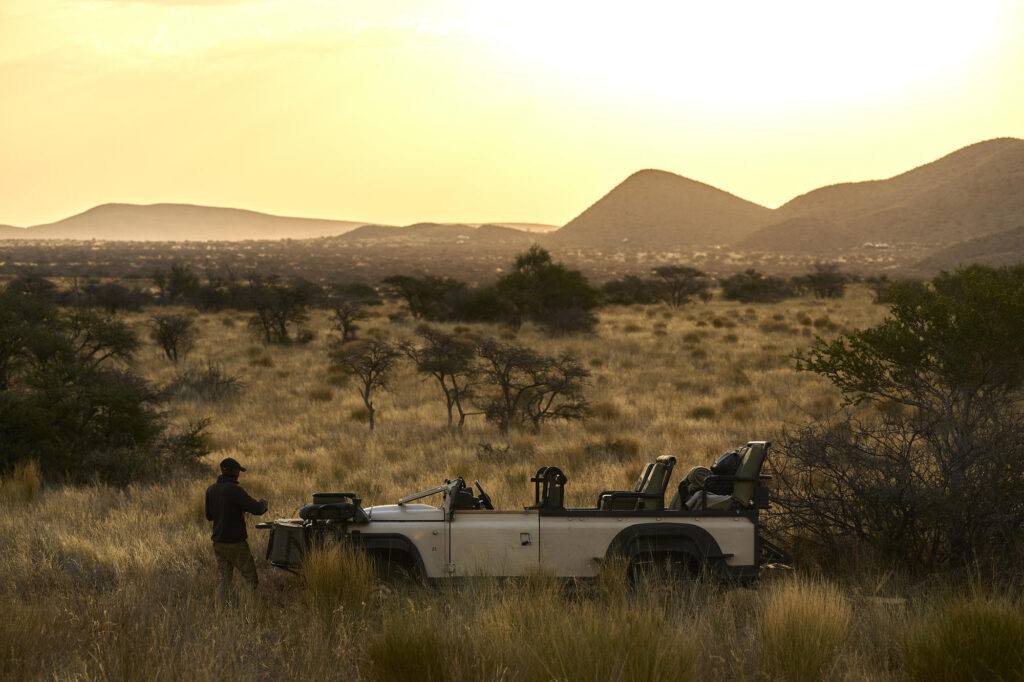
With a private vehicle included in each booking at no additional cost, days on safari become effortless, especially if the weather changes unexpectedly. Everything is flexible and entirely up to you and what you want to experience. There is no need to consider anyone else if you want to grab a coffee to go and head out very early in the morning to track a desert black rhino or locate a pack of African wild dogs last spotted in a remote area of the reserve.
Whatever the season, Tswalu’s vast landscapes offer a rare opportunity to connect with the rhythms of the natural world, providing a safari experience defined by an abundance of space and the luxury of time to truly absorb the wonders of the southern Kalahari.
